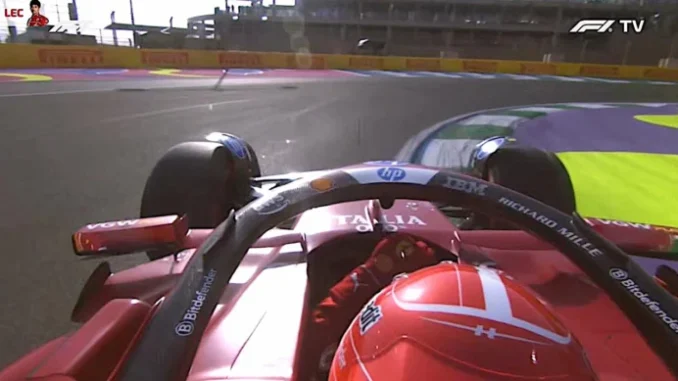
Ferrari’s Problems in F1: It’s Not the Corners, It’s the Setup
Ferrari is facing several issues in Formula 1. The car has been radically changed in many of its concepts — a move that, at least for now, must unfortunately be judged negatively. Perhaps it would have been better to keep the base of the 2024 car and develop it further, correcting its flaws. The idea that “we had reached the limits of the previous project” is starting to fall apart. Of course, we’re talking about assumptions — but the fact remains: the work done for the 2025 championship is far from what was expected.
Luckily, there’s Charles Leclerc. After five races into the current season, the Monegasque driver is the only true upgrade Ferrari has made — capable, with his often underappreciated skills, of showing the team the path out of the performance chaos that’s dragging the Prancing Horse down. The experienced Ferrari man is the sole leader of this working group.
The Unsolved Issue in Sector 1 During Qualifying
Beyond what was said in the introduction, there’s an interesting point worth discussing: the car’s performance within a certain speed range. It was important to clarify some concepts — with data in hand — to demonstrate that a large portion of Ferrari’s struggles in the more technical sections of the circuits comes from a specific factor.
This weekend in Jeddah, the Italian team appeared to struggle in slow corners — something evident from the telemetry. The narrative making the rounds is that Ferrari suffers from a fundamental lack of mechanical grip. However, this is simply not true — and the reality is far more complex. Simplifying the issue, as done in some TV analyses, is just wrong.
The same goes for claiming that Ferrari doesn’t perform in slow corners. In our usual race weekend analysis, we pointed out that Ferrari was losing several tenths between the entry of Turn 1 and the exit of Turn 3. But looking at the average telemetry data from other teams, it’s clear that the Italian car had room to improve in that zone.
Leclerc could have recovered a significant gap — we’re talking about 2 tenths of a second in the “ideal gap.” Unfortunately, the expected step didn’t come during qualifying, and the final gap increased to 3.5 tenths. The team managed to improve performance in that section only during the race, where, even according to Vasseur, the car’s pace was stronger.
The Setup Limit Is a Big Burden
Some key clarifications are needed to understand Ferrari’s work in depth. Let’s talk about the first chicane of the track — which is crucial, as these are the only truly “slow” corners. In various other scenarios, like China, the SF-25 has shown it can generate plenty of grip at low speeds.
We’re talking about both longitudinal and lateral grip. The baseline grip is there — but once again, it’s hard to unlock. This brings us back to what D’Ambrosio said: that the SF-25 is difficult to get into the correct operating window. Even though in Saudi Arabia — for the second time after Bahrain — the setup wasn’t extreme, there are still clear limitations in the setup.
Once again, the “blanket is too short” to cover all types of corners. The lack of pure performance compared to McLaren naturally limits the range of setups Ferrari can use. They’re currently trailing by about 3 tenths of pure performance, or 0.06s per kilometer. Ferrari is therefore forced to focus on optimizing only one type of corner — in Jeddah’s case, the fast ones, since they were numerically dominant on that track.
SF-25: Two Known Problems
Suspension setup plays a key role. In fast corners, stiffer setups are used to stabilize the floor’s work. This reduces variations in the car’s characteristic angles (roll, yaw, and pitch). Ferrari’s struggle in slower sectors is not an inherent weakness but a specific issue tied to the track characteristics and the kind of setup they are forced to run.
Even team principal Frederic Vasseur confirmed this: there isn’t a problem in slow corners. The real issues — as we’ve highlighted weekend after weekend — are twofold:
-
Lack of downforce compared to Red Bull and McLaren
-
Excessive understeer, which only Leclerc is partly able to manage — though it still costs him several tenths per lap

Leave a Reply